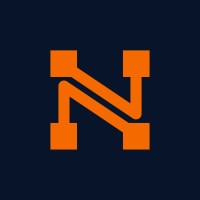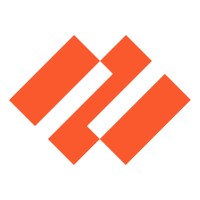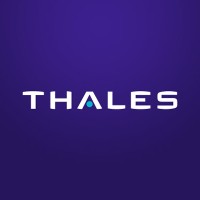
NetSPI Company Cyber Security Posture
netspi.comNetSPI is the proactive security solution used to discover, prioritize, and remediate security vulnerabilities of the highest importance, so businesses can protect what matters most. Leveraging a unique combination of dedicated security experts, intelligent process, and advanced technology, NetSPI helps security teams take a proactive approach to cybersecurity with more clarity, speed, and scale than ever before. By continually advancing solutions such as Penetration Testing as a Service (PTaaS), Attack Surface Management (ASM), and Breach and Attack Simulation (BAS), NetSPI goes beyond the noise to deliver high impact results and recommendations based on business needs, so customers can protect their priorities, perform better, and innovate with confidence. NetSPI secures the most trusted brands on Earth, including nine of the top 10 U.S. banks, four of the top five leading cloud providers, three of the five largest healthcare companies, four MAMAA companies, seven of the top 10 U.S. retailers & e-commerce companies, and many of the Fortune 500. NetSPI is headquartered in Minneapolis, MN, with offices across the U.S., Canada, the UK, and India.
NetSPI Company Details
netspi
640 employees
46020.0
none
Computer and Network Security
netspi.com
Scan still pending
NET_1460197
In-progress
Between 200 and 800
This score is AI-generated and less favored by cyber insurers, who prefer the TPRM score.
 NetSPI Global Score
NetSPI Global Score.png)

NetSPI Company Scoring based on AI Models
| Model Name | Date | Description | Current Score Difference | Score |
|---|---|---|---|---|
| AVERAGE-Industry | 03-12-2025 | This score represents the average cybersecurity rating of companies already scanned within the same industry. It provides a benchmark to compare an individual company's security posture against its industry peers. | N/A | Between 200 and 800 |
NetSPI Company Cyber Security News & History
| Entity | Type | Severity | Impact | Seen | Url ID | Details | View |
|---|---|---|---|---|---|---|---|
| NetSPI | Vulnerability | 100 | 5 | 8/2024 | NET001080624 | Link | |
Rankiteo Explanation : Attack threatening the organization’s existenceDescription: NetSPI security researchers unveiled the RayV Lite, an affordable laser-based device that can hack microchips, at the Black Hat cybersecurity conference. By introducing this technology, which makes laser fault injection accessible to a wider audience for less than $500, the company has potentially opened doors for both constructive security research and destructive exploitation of hardware vulnerabilities. This device could lead to widespread reverse engineering of chips and exposure of their weaknesses, thereby causing significant security concerns for hardware manufacturers and users alike. | |||||||
NetSPI Company Subsidiaries

NetSPI is the proactive security solution used to discover, prioritize, and remediate security vulnerabilities of the highest importance, so businesses can protect what matters most. Leveraging a unique combination of dedicated security experts, intelligent process, and advanced technology, NetSPI helps security teams take a proactive approach to cybersecurity with more clarity, speed, and scale than ever before. By continually advancing solutions such as Penetration Testing as a Service (PTaaS), Attack Surface Management (ASM), and Breach and Attack Simulation (BAS), NetSPI goes beyond the noise to deliver high impact results and recommendations based on business needs, so customers can protect their priorities, perform better, and innovate with confidence. NetSPI secures the most trusted brands on Earth, including nine of the top 10 U.S. banks, four of the top five leading cloud providers, three of the five largest healthcare companies, four MAMAA companies, seven of the top 10 U.S. retailers & e-commerce companies, and many of the Fortune 500. NetSPI is headquartered in Minneapolis, MN, with offices across the U.S., Canada, the UK, and India.
Access Data Using Our API

Get company history
.png)
NetSPI Cyber Security News
NetSPI Achieves Banner Year in 2024, Poised for Accelerated Growth and Applied Innovation in 2025
NetSPI is a proactive cybersecurity provider that helps businesses identify, prioritize, and fix critical security vulnerabilities to protect what matters most.
Trinexia partners with NetSPI to bring proactive security services to the Middle East
NetSPI, the proactive security solution, is expanding its footprint in the Middle East through a strategic distribution partnership with TRINEXIA.
NetSPI Names Caroline Japic as Chief Marketing Officer to Drive Next Phase of Growth and Expand Proactive Security Vision
NetSPI, the leader in proactive cybersecurity solutions, today announced that Caroline Japic has joined the company as Chief Marketing Officer.
Beyond CISO Scapegoating: Cultivating Company-Wide Security Mindsets
Businesses must adopt a proactive, company-wide security culture, emphasizing collaboration, regulatory compliance, and continuous improvement.
NetSPI Buys Virginia Cybersecurity Firm
Aaron Shilts, CEO and president of Minneapolis-based NetSPI, says the purchase “rounds out” the company's cybersecurity offerings.
NetSPI acquires Hubble, adds CAASM to its EASM to extend proactive security
With the acquisition of Hubble, NetSPI will deliver both EASM and CAASM capabilities within The NetSPI Platform.
NetSPI acquires Hubble to bolster cyber security offerings
None
KKR Invests $410M In Cyber Firm NetSPI
Minneapolis-based cybersecurity company NetSPI locked up a $410 million growth investment from private equity giant KKR. The company provides ...
Endpoint Security and Network Monitoring News for the Week of June 14; NetSPI, KnowBe4, Prosimo, and More
The editors have curated this list of the most noteworthy endpoint security and network monitoring news for the week of June 14.

NetSPI Similar Companies

Google Cloud Security
With comprehensive cybersecurity solutions, organizations can address their tough security challenges with many of the same capabilities Google uses to keep more people and organizations safe online than anyone else in the world. Experience Mandiant frontline intelligence and expertise, a modern, in

Palo Alto Networks
Palo Alto Networks, the global cybersecurity leader, is shaping the cloud-centric future with technology that is transforming the way people and organizations operate. Our mission is to be the cybersecurity partner of choice, protecting our digital way of life. We help address the world's greatest s

CrowdStrike
CrowdStrike (Nasdaq: CRWD), a global cybersecurity leader, has redefined modern security with the world’s most advanced cloud-native platform for protecting critical areas of enterprise risk — endpoints and cloud workloads, identity and data. Powered by the CrowdStrike Security Cloud and world-clas

Thales Cyber Solutions
Drawing on a team of 6,000 experts and developers, Thales is a global leader in cybersecurity – no.1 in data security - with solutions deployed in 148 countries, generating annual revenues in excess of €2 billion in the domain. Thales supports its enterprise and government customers in the cybe

Frequently Asked Questions (FAQ) on Cybersecurity Incidents
NetSPI CyberSecurity History Information
Total Incidents: According to Rankiteo, NetSPI has faced 1 incidents in the past.
Incident Types: The types of cybersecurity incidents that have occurred include ['Vulnerability'].
Total Financial Loss: The total financial loss from these incidents is estimated to be {total_financial_loss}.
Cybersecurity Posture: The company's overall cybersecurity posture is described as NetSPI is the proactive security solution used to discover, prioritize, and remediate security vulnerabilities of the highest importance, so businesses can protect what matters most. Leveraging a unique combination of dedicated security experts, intelligent process, and advanced technology, NetSPI helps security teams take a proactive approach to cybersecurity with more clarity, speed, and scale than ever before. By continually advancing solutions such as Penetration Testing as a Service (PTaaS), Attack Surface Management (ASM), and Breach and Attack Simulation (BAS), NetSPI goes beyond the noise to deliver high impact results and recommendations based on business needs, so customers can protect their priorities, perform better, and innovate with confidence. NetSPI secures the most trusted brands on Earth, including nine of the top 10 U.S. banks, four of the top five leading cloud providers, three of the five largest healthcare companies, four MAMAA companies, seven of the top 10 U.S. retailers & e-commerce companies, and many of the Fortune 500. NetSPI is headquartered in Minneapolis, MN, with offices across the U.S., Canada, the UK, and India..
Detection and Response: The company detects and responds to cybersecurity incidents through {description_of_detection_and_response_process}.
Incident Details
Incident 1: Ransomware Attack
Title: {Incident_Title}
Description: {Brief_description_of_the_incident}
Date Detected: {Detection_Date}
Date Publicly Disclosed: {Disclosure_Date}
Date Resolved: {Resolution_Date}
Type: {Type_of_Attack}
Attack Vector: {Attack_Vector}
Vulnerability Exploited: {Vulnerability}
Threat Actor: {Threat_Actor}
Motivation: {Motivation}
Incident 2: Data Breach
Title: {Incident_Title}
Description: {Brief_description_of_the_incident}
Date Detected: {Detection_Date}
Date Publicly Disclosed: {Disclosure_Date}
Date Resolved: {Resolution_Date}
Type: {Type_of_Attack}
Attack Vector: {Attack_Vector}
Vulnerability Exploited: {Vulnerability}
Threat Actor: {Threat_Actor}
Motivation: {Motivation}
Common Attack Types: As of now, the company has not encountered any reported incidents involving common cyberattacks.
Identification of Attack Vectors: The company identifies the attack vectors used in incidents through {description_of_identification_process}.
Impact of the Incidents
Incident 1: Ransomware Attack
Financial Loss: {Financial_Loss}
Data Compromised: {Data_Compromised}
Systems Affected: {Systems_Affected}
Downtime: {Downtime}
Operational Impact: {Operational_Impact}
Conversion Rate Impact: {Conversion_Rate_Impact}
Revenue Loss: {Revenue_Loss}
Customer Complaints: {Customer_Complaints}
Brand Reputation Impact: {Brand_Reputation_Impact}
Legal Liabilities: {Legal_Liabilities}
Identity Theft Risk: {Identity_Theft_Risk}
Payment Information Risk: {Payment_Information_Risk}
Incident 2: Data Breach
Financial Loss: {Financial_Loss}
Data Compromised: {Data_Compromised}
Systems Affected: {Systems_Affected}
Downtime: {Downtime}
Operational Impact: {Operational_Impact}
Conversion Rate Impact: {Conversion_Rate_Impact}
Revenue Loss: {Revenue_Loss}
Customer Complaints: {Customer_Complaints}
Brand Reputation Impact: {Brand_Reputation_Impact}
Legal Liabilities: {Legal_Liabilities}
Identity Theft Risk: {Identity_Theft_Risk}
Payment Information Risk: {Payment_Information_Risk}
Average Financial Loss: The average financial loss per incident is {average_financial_loss}.
Commonly Compromised Data Types: The types of data most commonly compromised in incidents are {list_of_commonly_compromised_data_types}.
Incident 1: Ransomware Attack
Entity Name: {Entity_Name}
Entity Type: {Entity_Type}
Industry: {Industry}
Location: {Location}
Size: {Size}
Customers Affected: {Customers_Affected}
Incident 2: Data Breach
Entity Name: {Entity_Name}
Entity Type: {Entity_Type}
Industry: {Industry}
Location: {Location}
Size: {Size}
Customers Affected: {Customers_Affected}
Response to the Incidents
Incident 1: Ransomware Attack
Incident Response Plan Activated: {Yes/No}
Third Party Assistance: {Yes/No}
Law Enforcement Notified: {Yes/No}
Containment Measures: {Containment_Measures}
Remediation Measures: {Remediation_Measures}
Recovery Measures: {Recovery_Measures}
Communication Strategy: {Communication_Strategy}
Adaptive Behavioral WAF: {Adaptive_Behavioral_WAF}
On-Demand Scrubbing Services: {On_Demand_Scrubbing_Services}
Network Segmentation: {Network_Segmentation}
Enhanced Monitoring: {Enhanced_Monitoring}
Incident 2: Data Breach
Incident Response Plan Activated: {Yes/No}
Third Party Assistance: {Yes/No}
Law Enforcement Notified: {Yes/No}
Containment Measures: {Containment_Measures}
Remediation Measures: {Remediation_Measures}
Recovery Measures: {Recovery_Measures}
Communication Strategy: {Communication_Strategy}
Adaptive Behavioral WAF: {Adaptive_Behavioral_WAF}
On-Demand Scrubbing Services: {On_Demand_Scrubbing_Services}
Network Segmentation: {Network_Segmentation}
Enhanced Monitoring: {Enhanced_Monitoring}
Incident Response Plan: The company's incident response plan is described as {description_of_incident_response_plan}.
Third-Party Assistance: The company involves third-party assistance in incident response through {description_of_third_party_involvement}.
Data Breach Information
Incident 2: Data Breach
Type of Data Compromised: {Type_of_Data}
Number of Records Exposed: {Number_of_Records}
Sensitivity of Data: {Sensitivity_of_Data}
Data Exfiltration: {Yes/No}
Data Encryption: {Yes/No}
File Types Exposed: {File_Types}
Personally Identifiable Information: {Yes/No}
Prevention of Data Exfiltration: The company takes the following measures to prevent data exfiltration: {description_of_prevention_measures}.
Handling of PII Incidents: The company handles incidents involving personally identifiable information (PII) through {description_of_handling_process}.
Ransomware Information
Incident 1: Ransomware Attack
Ransom Demanded: {Ransom_Amount}
Ransom Paid: {Ransom_Paid}
Ransomware Strain: {Ransomware_Strain}
Data Encryption: {Yes/No}
Data Exfiltration: {Yes/No}
Ransom Payment Policy: The company's policy on paying ransoms in ransomware incidents is described as {description_of_ransom_payment_policy}.
Data Recovery from Ransomware: The company recovers data encrypted by ransomware through {description_of_data_recovery_process}.
Regulatory Compliance
Incident 1: Ransomware Attack
Regulations Violated: {Regulations_Violated}
Fines Imposed: {Fines_Imposed}
Legal Actions: {Legal_Actions}
Regulatory Notifications: {Regulatory_Notifications}
Incident 2: Data Breach
Regulations Violated: {Regulations_Violated}
Fines Imposed: {Fines_Imposed}
Legal Actions: {Legal_Actions}
Regulatory Notifications: {Regulatory_Notifications}
Regulatory Frameworks: The company complies with the following regulatory frameworks regarding cybersecurity: {list_of_regulatory_frameworks}.
Ensuring Regulatory Compliance: The company ensures compliance with regulatory requirements through {description_of_compliance_measures}.
Lessons Learned and Recommendations
Incident 1: Ransomware Attack
Lessons Learned: {Lessons_Learned}
Incident 2: Data Breach
Lessons Learned: {Lessons_Learned}
Incident 1: Ransomware Attack
Recommendations: {Recommendations}
Incident 2: Data Breach
Recommendations: {Recommendations}
Key Lessons Learned: The key lessons learned from past incidents are {list_of_key_lessons_learned}.
Implemented Recommendations: The company has implemented the following recommendations to improve cybersecurity: {list_of_implemented_recommendations}.
References
Additional Resources: Stakeholders can find additional resources on cybersecurity best practices at {list_of_additional_resources}.
Investigation Status
Incident 1: Ransomware Attack
Investigation Status: {Investigation_Status}
Incident 2: Data Breach
Investigation Status: {Investigation_Status}
Communication of Investigation Status: The company communicates the status of incident investigations to stakeholders through {description_of_communication_process}.
Stakeholder and Customer Advisories
Incident 1: Ransomware Attack
Stakeholder Advisories: {Stakeholder_Advisories}
Customer Advisories: {Customer_Advisories}
Incident 2: Data Breach
Stakeholder Advisories: {Stakeholder_Advisories}
Customer Advisories: {Customer_Advisories}
Advisories Provided: The company provides the following advisories to stakeholders and customers following an incident: {description_of_advisories_provided}.
Initial Access Broker
Incident 1: Ransomware Attack
Entry Point: {Entry_Point}
Reconnaissance Period: {Reconnaissance_Period}
Backdoors Established: {Backdoors_Established}
High Value Targets: {High_Value_Targets}
Data Sold on Dark Web: {Yes/No}
Incident 2: Data Breach
Entry Point: {Entry_Point}
Reconnaissance Period: {Reconnaissance_Period}
Backdoors Established: {Backdoors_Established}
High Value Targets: {High_Value_Targets}
Data Sold on Dark Web: {Yes/No}
Monitoring and Mitigation of Initial Access Brokers: The company monitors and mitigates the activities of initial access brokers through {description_of_monitoring_and_mitigation_measures}.
Post-Incident Analysis
Incident 1: Ransomware Attack
Root Causes: {Root_Causes}
Corrective Actions: {Corrective_Actions}
Incident 2: Data Breach
Root Causes: {Root_Causes}
Corrective Actions: {Corrective_Actions}
Post-Incident Analysis Process: The company's process for conducting post-incident analysis is described as {description_of_post_incident_analysis_process}.
Corrective Actions Taken: The company has taken the following corrective actions based on post-incident analysis: {list_of_corrective_actions_taken}.
Additional Questions
General Information
Ransom Payment History: The company has {paid/not_paid} ransoms in the past.
Last Ransom Demanded: The amount of the last ransom demanded was {last_ransom_amount}.
Last Attacking Group: The attacking group in the last incident was {last_attacking_group}.
Incident Details
Most Recent Incident Detected: The most recent incident detected was on {most_recent_incident_detected_date}.
Most Recent Incident Publicly Disclosed: The most recent incident publicly disclosed was on {most_recent_incident_publicly_disclosed_date}.
Most Recent Incident Resolved: The most recent incident resolved was on {most_recent_incident_resolved_date}.
Impact of the Incidents
Highest Financial Loss: The highest financial loss from an incident was {highest_financial_loss}.
Most Significant Data Compromised: The most significant data compromised in an incident was {most_significant_data_compromised}.
Most Significant System Affected: The most significant system affected in an incident was {most_significant_system_affected}.
Response to the Incidents
Third-Party Assistance in Most Recent Incident: The third-party assistance involved in the most recent incident was {third_party_assistance_in_most_recent_incident}.
Containment Measures in Most Recent Incident: The containment measures taken in the most recent incident were {containment_measures_in_most_recent_incident}.
Data Breach Information
Most Sensitive Data Compromised: The most sensitive data compromised in a breach was {most_sensitive_data_compromised}.
Number of Records Exposed: The number of records exposed in the most significant breach was {number_of_records_exposed}.
Ransomware Information
Highest Ransom Demanded: The highest ransom demanded in a ransomware incident was {highest_ransom_demanded}.
Highest Ransom Paid: The highest ransom paid in a ransomware incident was {highest_ransom_paid}.
Regulatory Compliance
Highest Fine Imposed: The highest fine imposed for a regulatory violation was {highest_fine_imposed}.
Most Significant Legal Action: The most significant legal action taken for a regulatory violation was {most_significant_legal_action}.
Lessons Learned and Recommendations
Most Significant Lesson Learned: The most significant lesson learned from past incidents was {most_significant_lesson_learned}.
Most Significant Recommendation Implemented: The most significant recommendation implemented to improve cybersecurity was {most_significant_recommendation_implemented}.
References
Most Recent Source: The most recent source of information about an incident is {most_recent_source}.
Most Recent URL for Additional Resources: The most recent URL for additional resources on cybersecurity best practices is {most_recent_url}.
Investigation Status
Current Status of Most Recent Investigation: The current status of the most recent investigation is {current_status_of_most_recent_investigation}.
Stakeholder and Customer Advisories
Most Recent Stakeholder Advisory: The most recent stakeholder advisory issued was {most_recent_stakeholder_advisory}.
Most Recent Customer Advisory: The most recent customer advisory issued was {most_recent_customer_advisory}.
Initial Access Broker
Most Recent Entry Point: The most recent entry point used by an initial access broker was {most_recent_entry_point}.
Most Recent Reconnaissance Period: The most recent reconnaissance period for an incident was {most_recent_reconnaissance_period}.
Post-Incident Analysis
Most Significant Root Cause: The most significant root cause identified in post-incident analysis was {most_significant_root_cause}.
Most Significant Corrective Action: The most significant corrective action taken based on post-incident analysis was {most_significant_corrective_action}.
What Do We Measure?
















Every week, Rankiteo analyzes billions of signals to give organizations a sharper, faster view of emerging risks. With deeper, more actionable intelligence at their fingertips, security teams can outpace threat actors, respond instantly to Zero-Day attacks, and dramatically shrink their risk exposure window.
These are some of the factors we use to calculate the overall score:
Identify exposed access points, detect misconfigured SSL certificates, and uncover vulnerabilities across the network infrastructure.
Gain visibility into the software components used within an organization to detect vulnerabilities, manage risk, and ensure supply chain security.
Monitor and manage all IT assets and their configurations to ensure accurate, real-time visibility across the company's technology environment.
Leverage real-time insights on active threats, malware campaigns, and emerging vulnerabilities to proactively defend against evolving cyberattacks.




